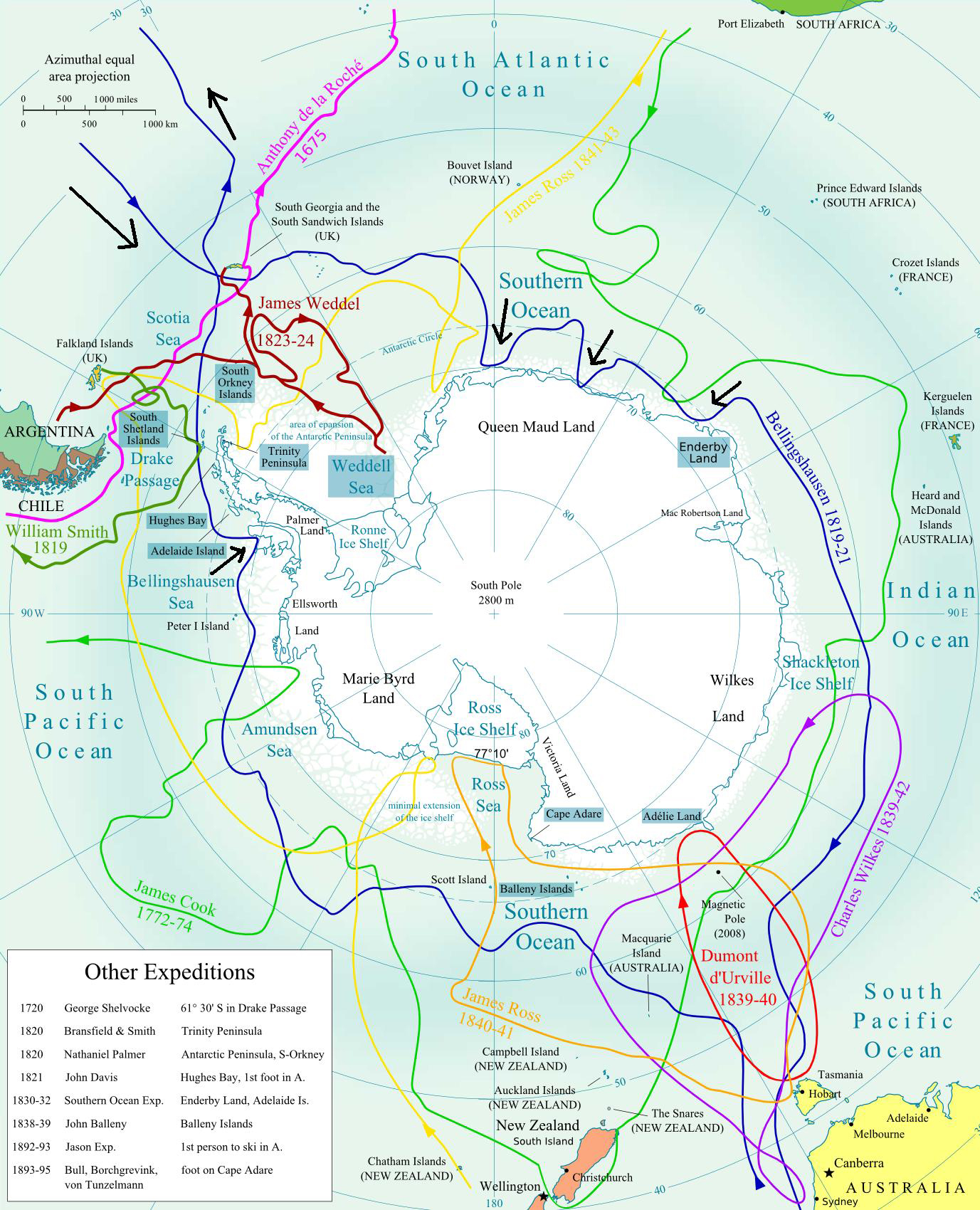MIKHAIL LAZAREV (1788 – 1851)
 Mikhail Lazarev was a Russian naval officer and explorer. Lazarev took part in the discovery of Antarctica and numerous islands, as a commander of the ship Mirnyi and Fabian Gottlieb von Bellingshausen’s deputy, on the 1819–1821 Russian naval expedition. The expedition circumnavigated Antarctica; was the first to cross the Antarctic circle since Captain Cook in 1773; and was the first to sight the Antarctic continent.
Mikhail Lazarev was a Russian naval officer and explorer. Lazarev took part in the discovery of Antarctica and numerous islands, as a commander of the ship Mirnyi and Fabian Gottlieb von Bellingshausen’s deputy, on the 1819–1821 Russian naval expedition. The expedition circumnavigated Antarctica; was the first to cross the Antarctic circle since Captain Cook in 1773; and was the first to sight the Antarctic continent.
On June 4, 1819, the flagship Vostok (commanded by Bellingshausen) and transport vessel Mirnyi set sail from Kronstadt. They stopped briefly in England, where Bellingshausen met with Sir Joseph Banks, the president of the Royal Society. Banks had sailed with Cook 50 years earlier and now supplied the Russians with books and charts for their expedition.
In December 1819 they mapped South Georgia and made discoveries in the South Sandwich Islands. It is interesting to note that icebergs supplied their fresh water needs. On January 26, 1820 the expedition crossed the Antarctic Circle becoming the first to do so since Cook in 1773. Bellingshausen’s log for the following day indicates sailing to within 20 miles (32 km) of the Antarctic mainland, at a point about lat 69°21’S, long 2°14’W, while Lazarev noted, “We encountered hardened ice of great height…it stretches as far as one’s vision could reach”. Thus, the expedition was the first to see the Antarctic continent and Lazarev was the first person to describe it.* Without doubt they saw the continent several more times, as they sailed eastward and attempted to penetrate further south.
On February 22 the Vostok and Mirnyi were hit by the worst storm of the voyage and were forced to sail north, arriving in Sydney, Australia in April. The crew took a month of rest, then set off on a four month exploratory cruise of the Pacific. When they arrived back in Sydney, they were notified that an English sealing captain named William Smith had discovered a group of islands, which he called the South Shetlands (61° 00′ to 63° 37’S, 53° 83′ to 62° 83’W), and had proclaimed them to be part of the Antarctic continent. Bellingshausen immediately decided to undertake a second voyage south.
Vostok and Mirnyi left Sydney on November 11, 1820. Two weeks later they arrived at Macquarie Island, where they exchanged greetings with English and American sealers. On December 24, the ships once again penetrated the Antarctic Circle and by the January 16, 1821 they had crossed the circle no less than six different times. Each time relentless storms forced them northward.
 On January 21 the weather cleared and they spotted a dark speck against the ice in the distance. The land turned out to be an island which they named Peter I Island. On January 28 a number of snow-free mountains were sighted within the 68th parallel and some 40 miles (64 km) to the south-southeast. Bellingshausen named this second discovery Alexander Coast, now known as Alexander Island. One week later they came upon eight English and American sealing ships in the South Shetlands and met American, Nathaniel Palmer, captain of the Hero. The expedition dropped anchor at Kronstadt on August 4, 1821, ending a voyage that had lasted two years and 21 days and covered 50,000 miles (80,467 km).
On January 21 the weather cleared and they spotted a dark speck against the ice in the distance. The land turned out to be an island which they named Peter I Island. On January 28 a number of snow-free mountains were sighted within the 68th parallel and some 40 miles (64 km) to the south-southeast. Bellingshausen named this second discovery Alexander Coast, now known as Alexander Island. One week later they came upon eight English and American sealing ships in the South Shetlands and met American, Nathaniel Palmer, captain of the Hero. The expedition dropped anchor at Kronstadt on August 4, 1821, ending a voyage that had lasted two years and 21 days and covered 50,000 miles (80,467 km).
After his return, Lazarev was promoted to the rank of Lieutenant–Captain. He sailed around the world for the third time in his life, gathering meteorological, biological, and ethnographic information about the Pacific and the Atlantic Oceans. He was further promoted to Admiral and served as commander of the Black Sea fleet for eighteen years.
The first Russian scientific bases Mirny and Vostock were established on the mainland during the International Geophysical Year (1957-58) and named after Bellingshausen’s expedition ships. Other features named after the explorer include the Lazarev Mountains (69°32’S 157°20’E); the Lazarev Ice Shelf fringing the coast of Dronning Maud Land; and Lazarev Bay between Alexander Island and Rothschild Island.
* Edward Bransfield sighted the north-west coast of the Antarctic Peninsula at about lat 63°50’S, long 60°30’W on 30 January 1820, three days later.



